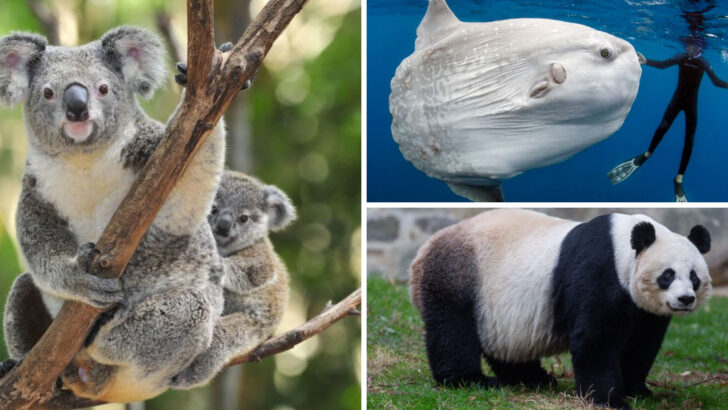It’s no secret that animals have some pretty unique eating habits, but some species take it to a whole new level. From insects that feast on metal to primates that only snack on specific kinds of fruit, the variety of diets in the animal kingdom is truly mind-boggling. It’s fascinating to think about how different creatures have evolved to thrive on foods that are completely out of the ordinary — foods that, for us, might seem downright strange or even inedible.
Take the panda, for example, which munches through over 40 pounds of bamboo a day just to get the nutrition it needs. Or the giant anteater, which uses its long tongue to slurp up thousands of ants and termites, making for a diet unlike anything most animals would consider. These are just a few of the wild and unexpected eating habits found in nature. Get ready to discover some of the most unusual and fascinating diets that keep animals healthy, happy, and, most importantly, alive.
Giant Panda
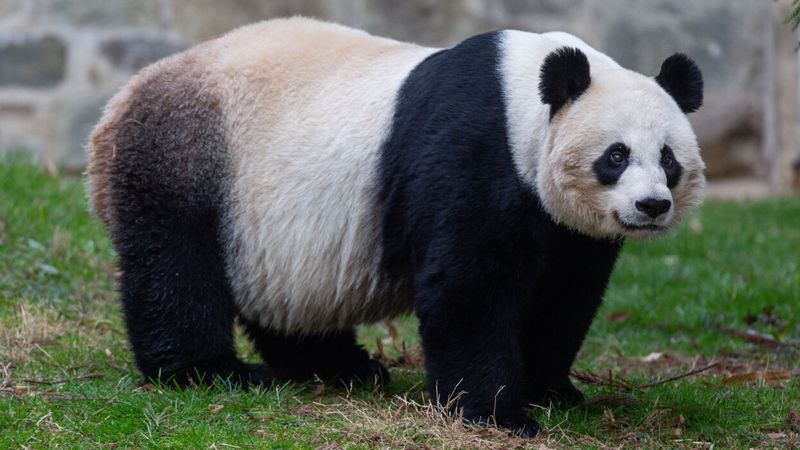
The giant panda is renowned for its unique diet, primarily consisting of bamboo. Despite being classified as a carnivore, bamboo makes up about 99% of their intake. Interestingly, they spend 12 hours a day eating up to 40 pounds of bamboo to satisfy their nutritional needs.
Their digestive system is more suited for a carnivorous diet, which makes their bamboo-centric lifestyle unusual. To supplement their diet, pandas occasionally eat small animals or fish.
Living mainly in the mountainous regions of central China, these gentle giants are a symbol of conservation efforts worldwide.
Vampire Bat
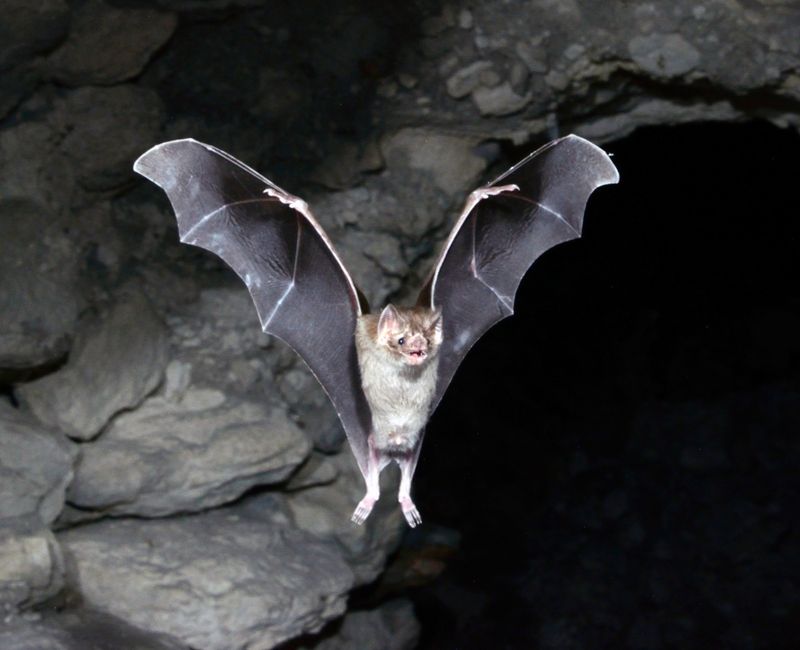
The vampire bat has one of the most intriguing diets in the animal kingdom. Unlike other bats that feed on fruits or insects, vampire bats survive on blood. This nocturnal creature uses heat sensors on its nose to locate blood vessels near the surface of an animal’s skin.
They then make a small incision with their sharp teeth and lap up the blood. The anticoagulant in their saliva prevents the blood from clotting.
These bats are primarily found in Central and South America and have evolved special adaptations to thrive on their unique diet.
Leafcutter Ant
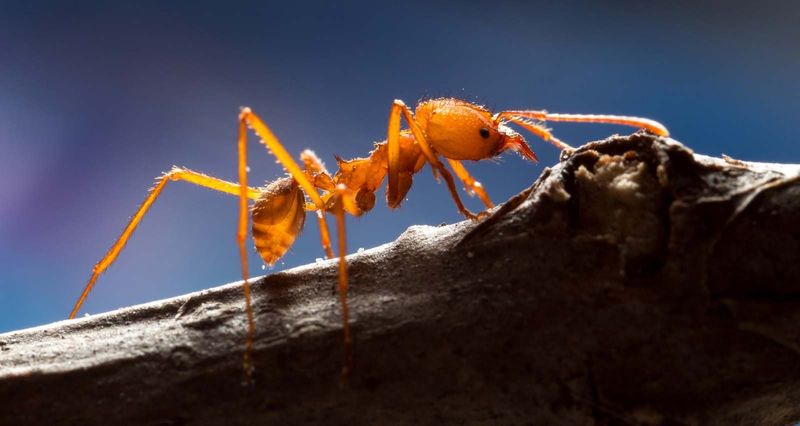
Leafcutter ants are remarkable for their farming skills. Instead of eating the leaves they collect, these ants use the foliage to cultivate fungus, which is their primary food source. They meticulously cut leaves and transport them back to their underground colonies.
Here, they chew the leaves to create a mulch for growing the fungus. This mutualistic relationship between the ants and the fungus is essential for both parties’ survival.
Leafcutter ants are primarily found in the tropical rainforests of South and Central America.
Aye-Aye
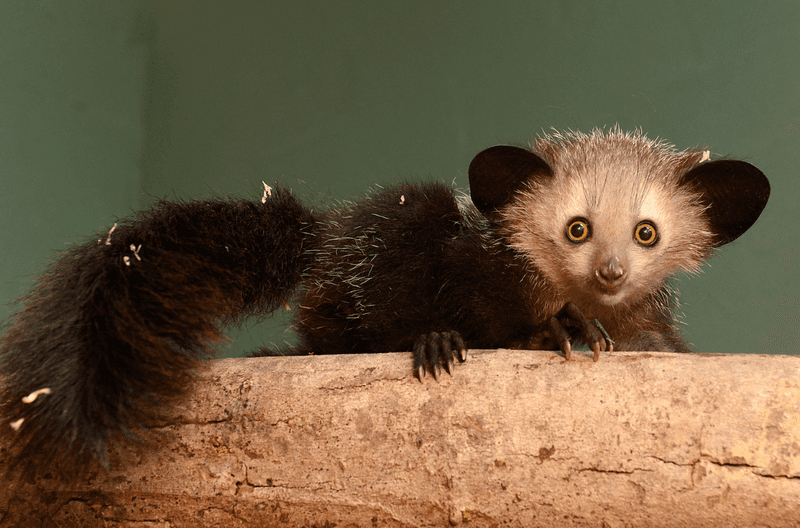
The aye-aye, a nocturnal lemur native to Madagascar, has a diet that’s as peculiar as its appearance. They primarily feed on insect larvae, which they locate by tapping on tree trunks with their elongated middle finger.
Once they detect movement, they gnaw a hole in the wood and use their finger to extract the larvae. This foraging method is unique to the aye-aye and showcases its specialized adaptations.
Besides larvae, they also consume fruits, nectar, and seeds. Their unusual diet and appearance make them one of the most fascinating primates.
Koala
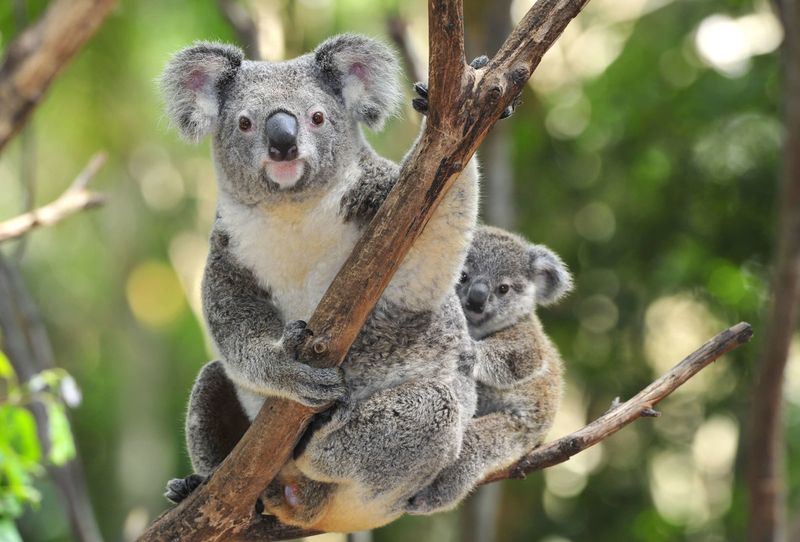
Koalas are iconic Australian marsupials known for their dependence on eucalyptus leaves. These leaves are tough, toxic, and low in nutrients, yet koalas have evolved to subsist almost exclusively on them.
To process the leaves, koalas have a specialized digestive system with an enlarged cecum and colon that help break down the fibrous content. They sleep for up to 18 hours a day to conserve energy, given the low nutritional value of their diet.
Koalas’ ability to thrive on such a restrictive and toxic diet is a testament to their unique evolutionary path.
Narwhal
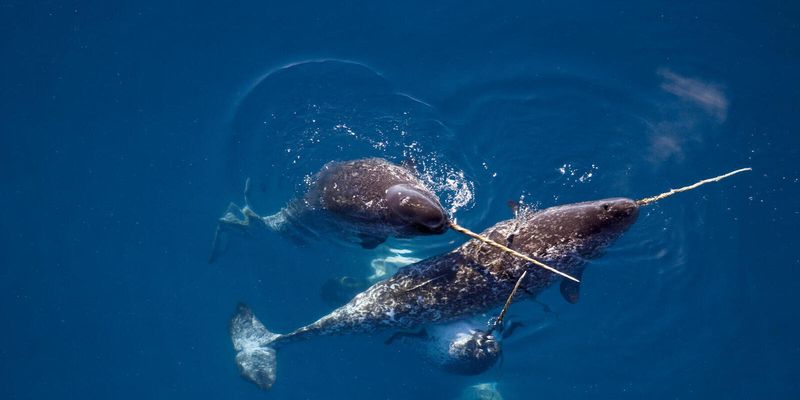
The narwhal, often called the unicorn of the sea, has a diet mainly consisting of Arctic fish like halibut and cod. However, what makes their feeding habits unusual is their use of echolocation to hunt in the dark, icy waters.
Their long, spiral tusk, which is an elongated tooth, may play a role in sensing the environment, although its exact function is still debated. Narwhals dive deep under the ice to find their prey, displaying remarkable adaptations to their harsh environment.
These Arctic dwellers are a symbol of the mysteries of the ocean.
Hoatzin
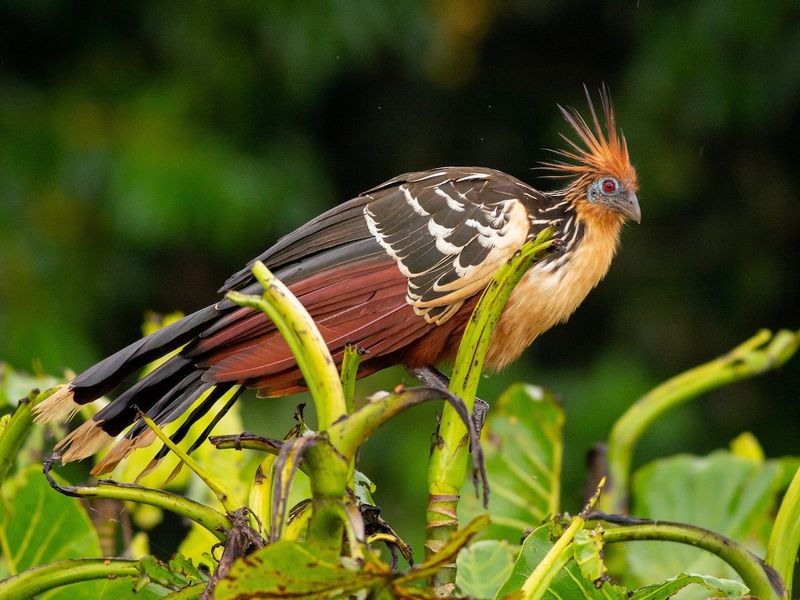
The hoatzin, a bird native to the Amazon rainforest, is one of the few avian species that rely heavily on a folivorous diet. Its primary food source is leaves, which it ferments in a specialized crop, similar to a cow’s stomach.
This process produces a distinctive odor, earning them the nickname “stink bird.” The fermentation provides them with the necessary nutrients from the leaves.
Hoatzins are often seen perched in trees near water bodies and are a unique example of avian adaptation to a vegetarian lifestyle.
Honey Badger
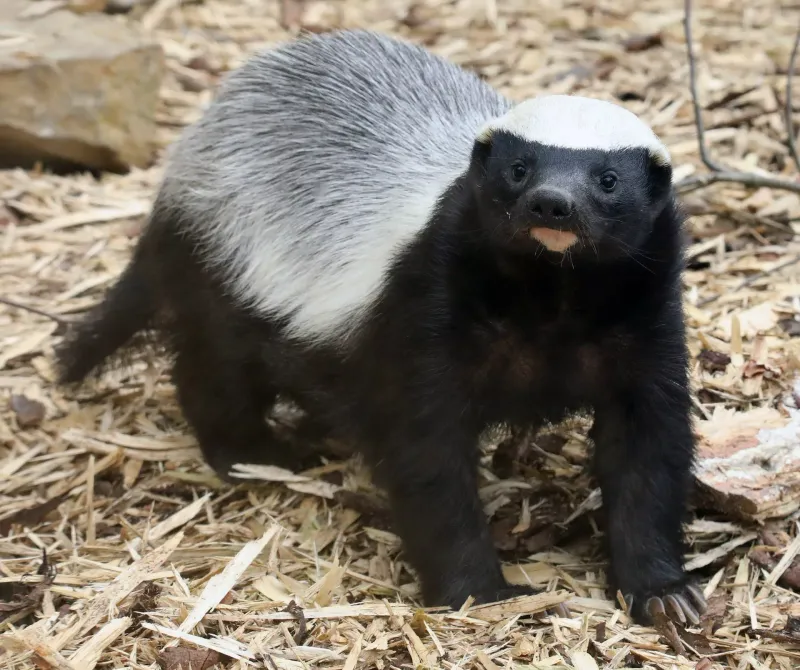
Honey badgers are famous for their fearless nature and diverse diet. They consume a wide range of food including honey, hence their name, as well as snakes, insects, and small mammals.
Their thick skin and ferocious attitude make them formidable hunters. Honey badgers are also known to use tools and cooperate with other animals, like the honeyguide bird, to find beehives.
This opportunistic eating behavior allows them to thrive in various habitats ranging from African savannas to Asian forests.
Mola Mola
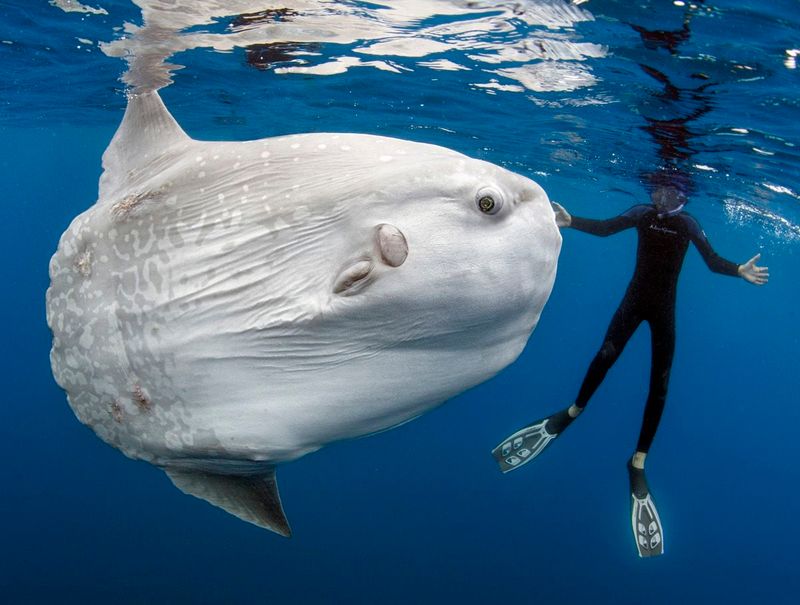
The mola mola, or ocean sunfish, has a diet primarily consisting of jellyfish. Despite their massive size, these peculiar fish feed mainly on soft-bodied organisms.
They consume large quantities of jellyfish, which are low in nutrients, by drifting through the water with their mouths open. This unusual diet is supplemented by other small fish and plankton.
Mola molas are found in temperate and tropical ocean waters worldwide, and their gentle nature and bizarre shape make them a favorite among divers.
Okapi
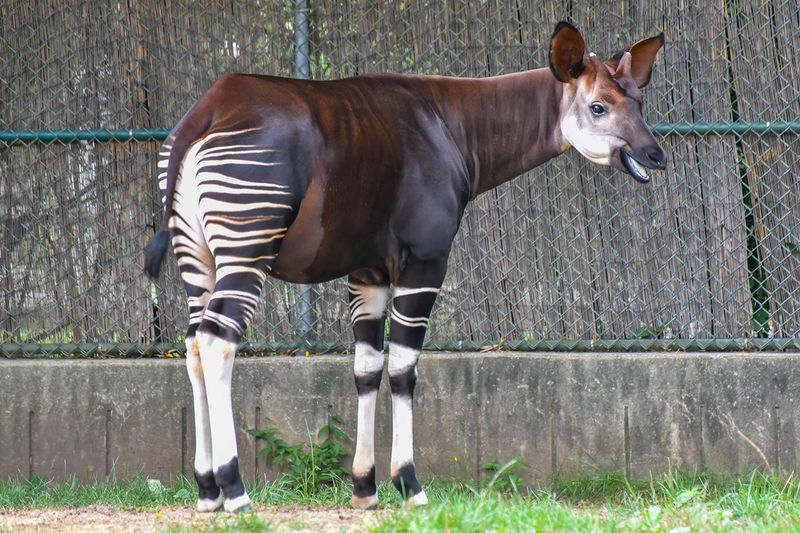
The okapi is a unique mammal native to the dense rainforests of the Democratic Republic of the Congo. Despite its zebra-like stripes, it’s closely related to the giraffe.
Okapis feed on tree leaves, buds, grasses, ferns, fruits, and fungi. Their long, prehensile tongues allow them to strip leaves from branches efficiently.
This solitary animal’s selective diet helps maintain the ecological balance in its habitat. Its elusive nature and limited range make it a fascinating subject of study for scientists and conservationists.
Lamprey
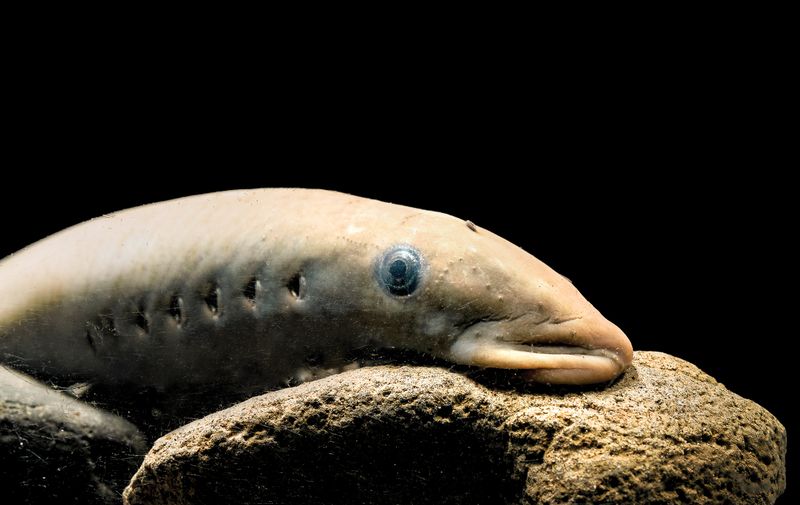
Lampreys are jawless fish known for their parasitic lifestyle. They attach to larger fish with their sucker-like mouths, rasping into the flesh to feed on blood and bodily fluids.
Their diet is notably different from most fish, relying on parasitism rather than hunting or scavenging. This feeding method is both fascinating and detrimental to host fish populations.
Lampreys inhabit both fresh and saltwater environments, showcasing their adaptability. Their ancient lineage and unique diet make them a remarkable study in evolutionary biology.
Sponge Crab
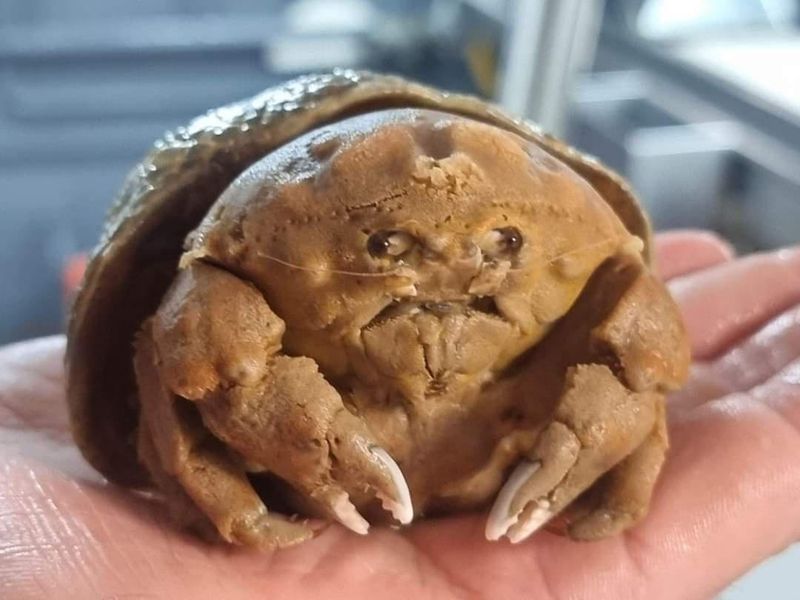
Sponge crabs have a unique way of feeding and protecting themselves. They carry living sponges on their backs, which serve as both camouflage and a source of food.
These crabs trim the sponge to fit their shells perfectly, ensuring they have a constant food supply as they move. This mutualistic relationship benefits both the crab and the sponge.
Found in various ocean habitats, sponge crabs demonstrate a remarkable adaptation that combines feeding with defense, making them a fascinating example of marine innovation.
Sea Otter
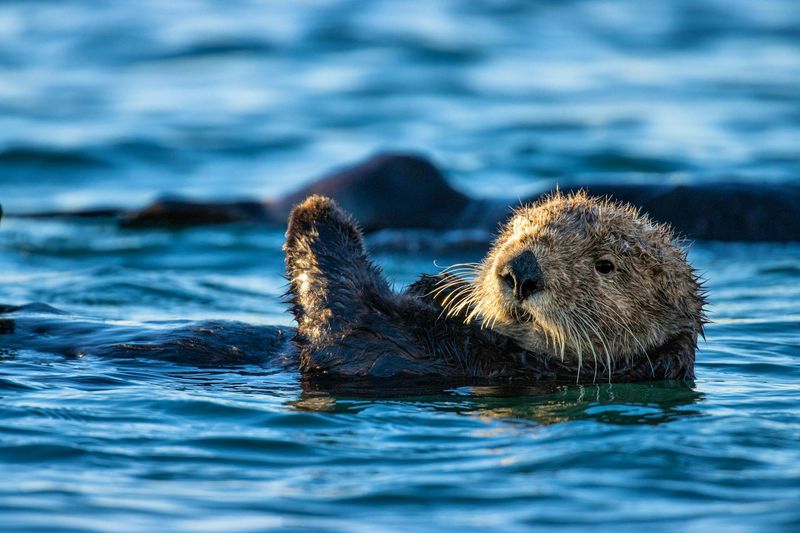
Sea otters are known for their use of tools to feed on marine invertebrates. They crack open the hard shells of sea urchins, crabs, and clams using rocks as anvils.
This method not only provides them with a nutritious meal but also helps maintain the balance of kelp forest ecosystems by controlling sea urchin populations.
Sea otters spend a significant amount of time grooming their dense fur to keep warm in cold waters, showcasing their unique adaptations and playful behavior.
Proboscis Monkey
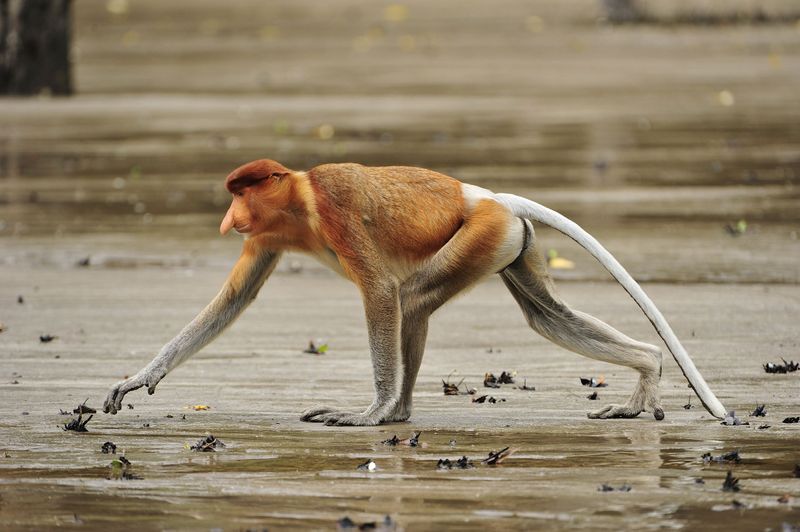
Proboscis monkeys are easily recognizable by their large, pendulous noses and distinctive diets. They primarily consume leaves, fruits, and seeds found in their mangrove and swamp forest habitats.
These monkeys have a specialized digestive system with a multi-chambered stomach that helps ferment and break down tough plant material.
Their dietary habits are crucial for their survival in the challenging environments of Borneo, highlighting their unique ecological niche and adaptations.
Wombat
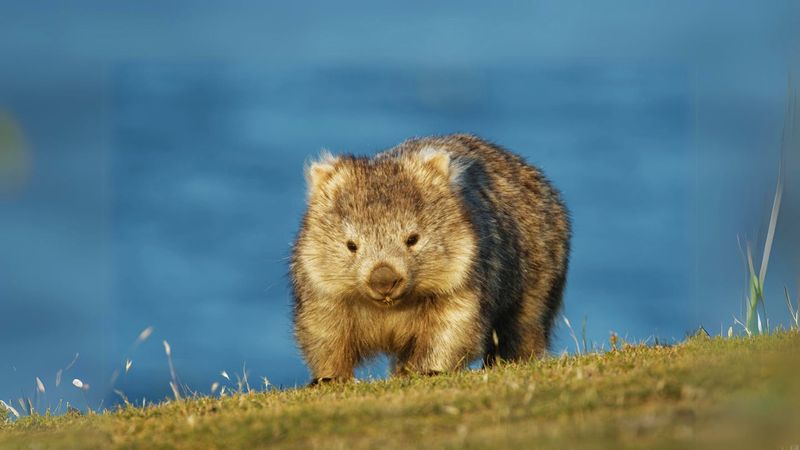
Wombats are burrowing marsupials native to Australia, known for their unusual diet of grasses, roots, and bark. Their slow metabolism allows them to extract maximum nutrients from their fibrous diet.
This adaptation is vital for survival in their arid habitats. Wombats have strong incisors that continuously grow, enabling them to gnaw through tough plant material.
Their distinctive cubic feces play an essential role in marking territory, showcasing their unique behavioral adaptations alongside their dietary habits.
Tasmanian Devil
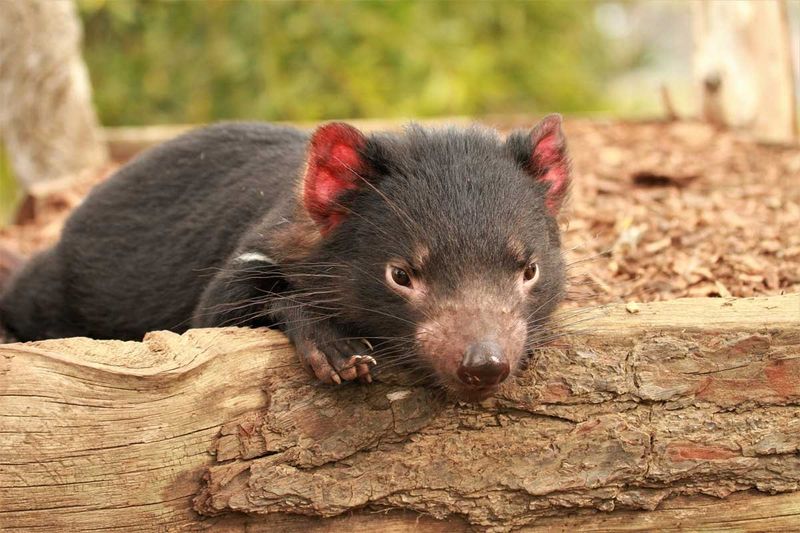
The Tasmanian devil is a carnivorous marsupial with a ferocious appetite. They feed on small mammals, birds, and carrion, often consuming entire carcasses, including bones and fur.
Their powerful jaws and teeth enable them to break down tough materials, making them efficient scavengers. This diet plays a significant role in cleaning up their ecosystem.
Native to Tasmania, these nocturnal creatures have become a symbol of conservation efforts due to their endangered status and fascinating feeding habits.
Giraffe
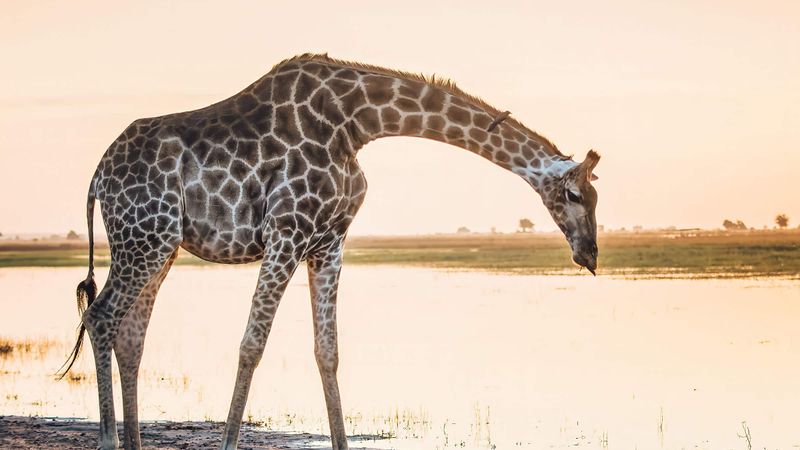
Giraffes are the tallest land animals, and their diets reflect their unique adaptations. They primarily feed on leaves from tall trees like acacias, using their long necks and prehensile tongues to reach high foliage.
Giraffes’ specially adapted tongues and mouths allow them to navigate around thorns, making the most of their savanna habitats.
Their browsing habits help shape the landscape, promoting plant growth and maintaining ecological balance. These gentle giants are an iconic symbol of Africa’s diverse wildlife.
Sloth
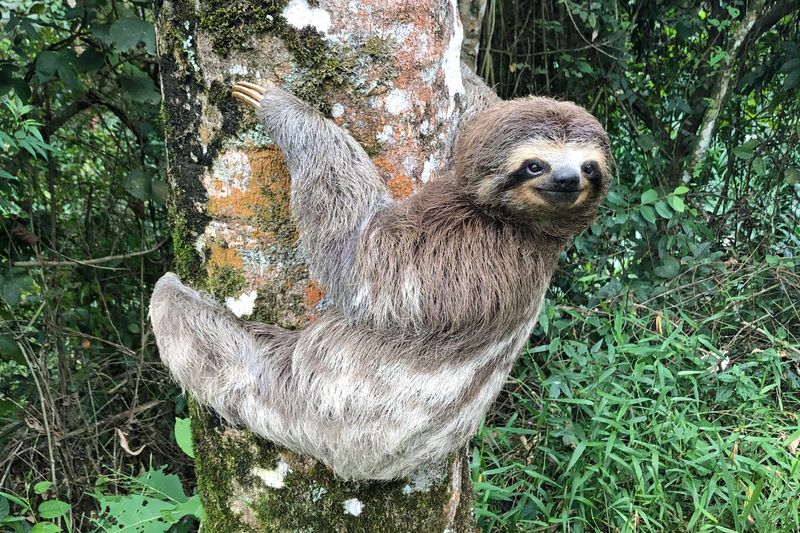
Sloths are slow-moving mammals known for their arboreal lifestyle and leaf-based diet. They consume a variety of leaves, buds, and tender shoots, which are low in nutrients and require a slow metabolism to digest efficiently.
Their unique digestive system hosts symbiotic bacteria that help break down the fibrous diet. Sloths’ lethargic movements and hanging posture conserve energy, aiding their survival in tropical rainforests.
Their fascinating adaptations to a low-energy lifestyle make them a remarkable example of evolutionary specialization.
Baleen Whale
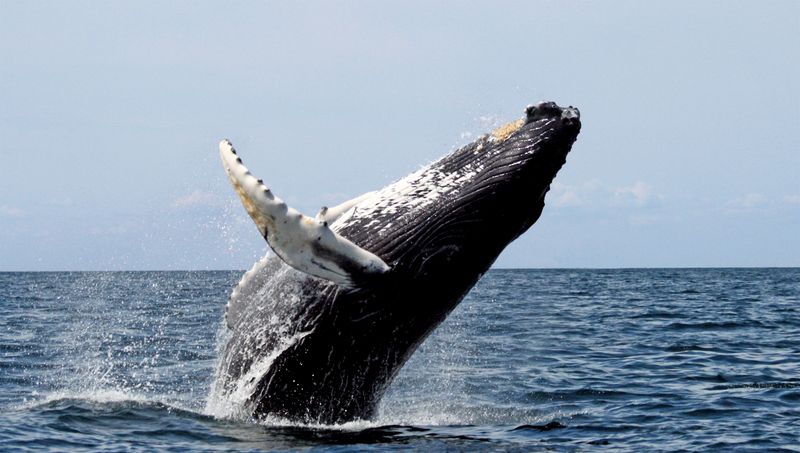
Baleen whales are the gentle giants of the sea, known for their filter-feeding technique. They feed primarily on krill and small fish, using baleen plates to strain these tiny organisms from the water.
Their feeding strategy involves taking in large gulps of water and pushing it out through the baleen, capturing food in the process. This efficient feeding method supports their massive size.
Baleen whales’ migratory patterns and feeding habits play a vital role in marine ecosystems, illustrating the complexity of oceanic life.
Pangolin
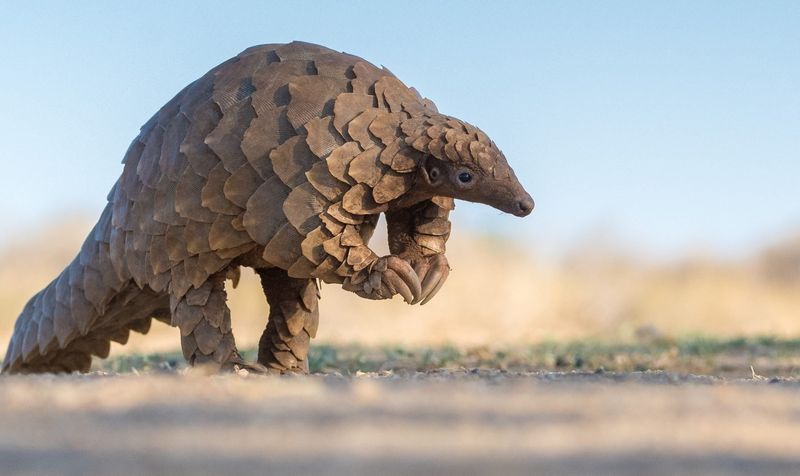
Pangolins are unique mammals known for their armored scales and specialized insectivorous diet. They primarily feed on ants and termites, using their long, sticky tongues to extract prey from nests.
Pangolins have strong, curved claws for tearing into insect mounds, and their stomachs contain keratinous spines for grinding food.
These solitary creatures are native to Africa and Asia, and their unique feeding habits and appearance make them a target for conservation efforts due to illegal poaching.
Galapagos Tortoise
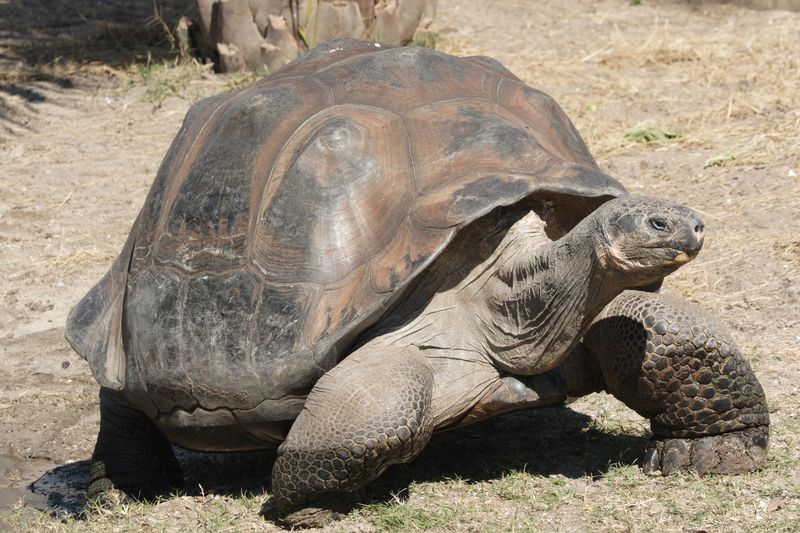
The Galapagos tortoise is a giant herbivore with a diet that includes cacti, fruits, and grasses. Their slow metabolism allows them to survive on the sparse vegetation of the Galapagos Islands.
These tortoises can go months without food or water, drawing on fat reserves and moisture from their diet. Their eating habits contribute to shaping the island’s ecosystem by dispersing seeds.
As one of the longest-lived animals, their unique dietary adaptations offer insights into the evolutionary processes of isolated environments.
Star-Nosed Mole
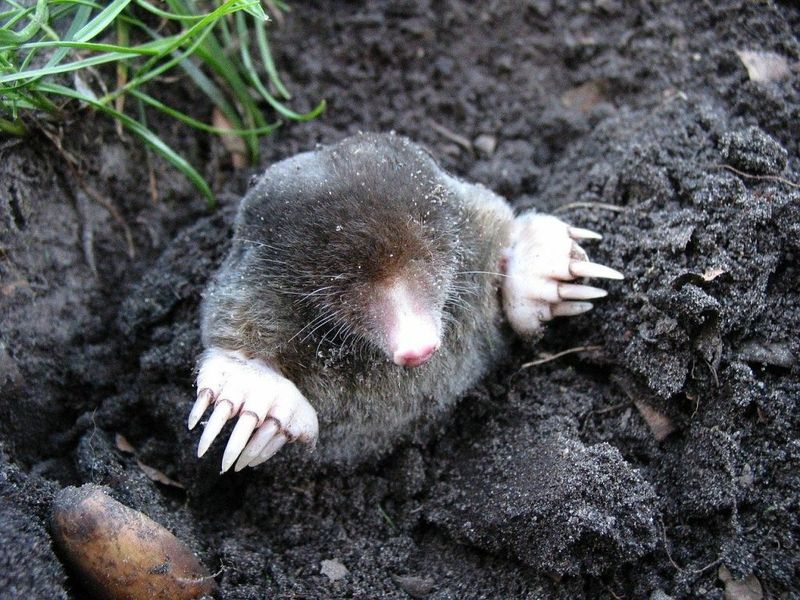
The star-nosed mole is famous for its distinctive star-shaped nose, which is highly sensitive and used to detect prey. This small mammal feeds on insects, worms, and aquatic invertebrates in wetland environments.
Their star-shaped appendage acts as a sensory organ, allowing them to locate and identify food with remarkable speed and efficiency.
Living underground, they have developed specialized adaptations to thrive in their unique niche, making them one of nature’s most intriguing foragers.

